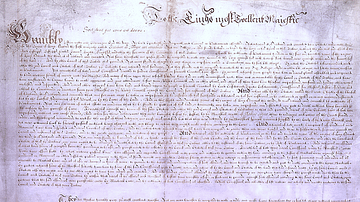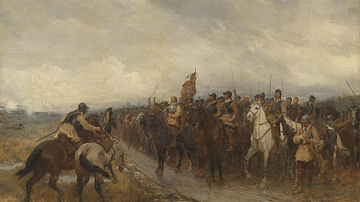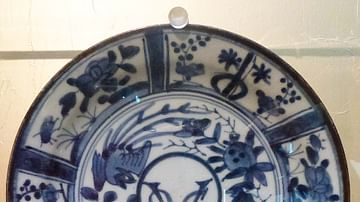Search Articles
Browse Content (p. 58)

Article
Petition of Right
The Petition of Right was a list of demands of King Charles I of England (r. 1625-1649) issued by Parliament in June 1628. The petition came after three years of disagreements between the king and Parliament over finances, religious matters...

Article
Consequences of the English Civil Wars
The impact and consequences of the English Civil Wars (1642-1651) were many and far-reaching. Charles I of England (r. 1625-1649) was executed, and the monarchy was abolished. Oliver Cromwell (1599-1658) then headed the Republic as the Lord...

Article
Dynamics of the Neolithic Revolution
The Neolithic Revolution began between 10,000 and 12,000 years ago at several widely dispersed locations across the world, when our ancestors first began planting and raising crops. Agricultural communities sprang up almost simultaneously...

Article
Causes of the English Civil Wars
The English Civil Wars (1642-1651) were caused by a monumental clash of ideas between King Charles I of England (r. 1625-1649) and his parliament. Arguments over the powers of the monarchy, finances, questions of religious practices and toleration...

Article
Battle of Dunbar in 1650
The battle of Dunbar on 3 September 1650 between the English Parliament's New Model Army led by Oliver Cromwell (1599-1658) and Scotland's army led by David Leslie (c. 1600-1682) was one of the last major battles of the English Civil Wars...

Article
Dragoons in the English Civil Wars
Dragoons were hybrid cavalry-infantry troops during the English Civil Wars (1642-1651). They usually dismounted before fighting and were used primarily as support troops. Dragoons were frequently tasked with capturing and holding strategically...

Article
The Dutch Discovery of Australia
17th-century Dutch East India Company (Vereenigde Oostindische Compagnie or VOC) navigators were the first Europeans to set foot on Australian soil. Although there is a strong theory that the Portuguese explorer, Cristóvão de Mendonça (1475-1532...

Article
Battle of Preston in 1648
The Battle of Preston between 17 and 20 August 1648 occurred during the English Civil Wars (1642-1651) and saw Oliver Cromwell lead Parliament's New Model Army to victory against an Anglo-Scottish army which supported King Charles I of England...

Article
Zwingli's Persecution of the Anabaptists
Huldrych Zwingli (l. 1484-1531) broke with the Church in 1522 and defended his beliefs at the First Disputation in 1523, encouraging many people in Zürich to embrace his teachings. Among his followers was a group, soon known as Anabaptists...

Article
Artillery in the English Civil Wars
During the English Civil Wars (1642-1651) artillery was an important if still developing feature of warfare. Both Royalist and Parliamentarian armies had large artillery units, which were used in battles and sieges throughout the conflict...